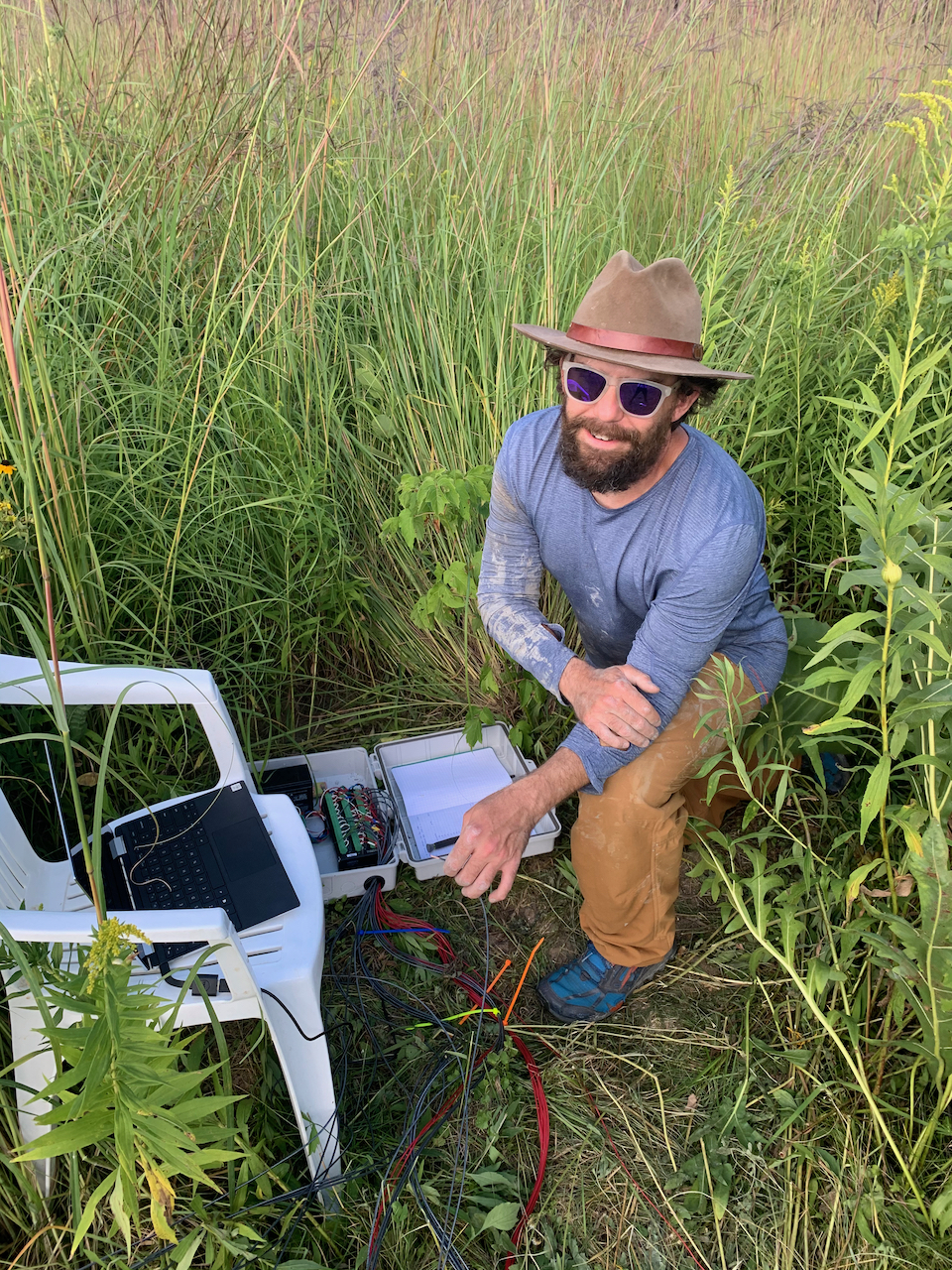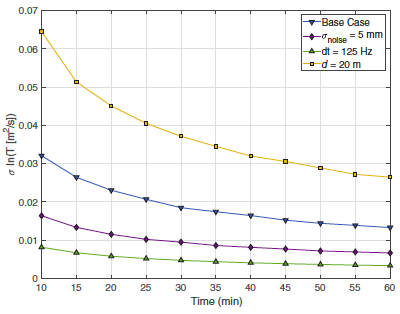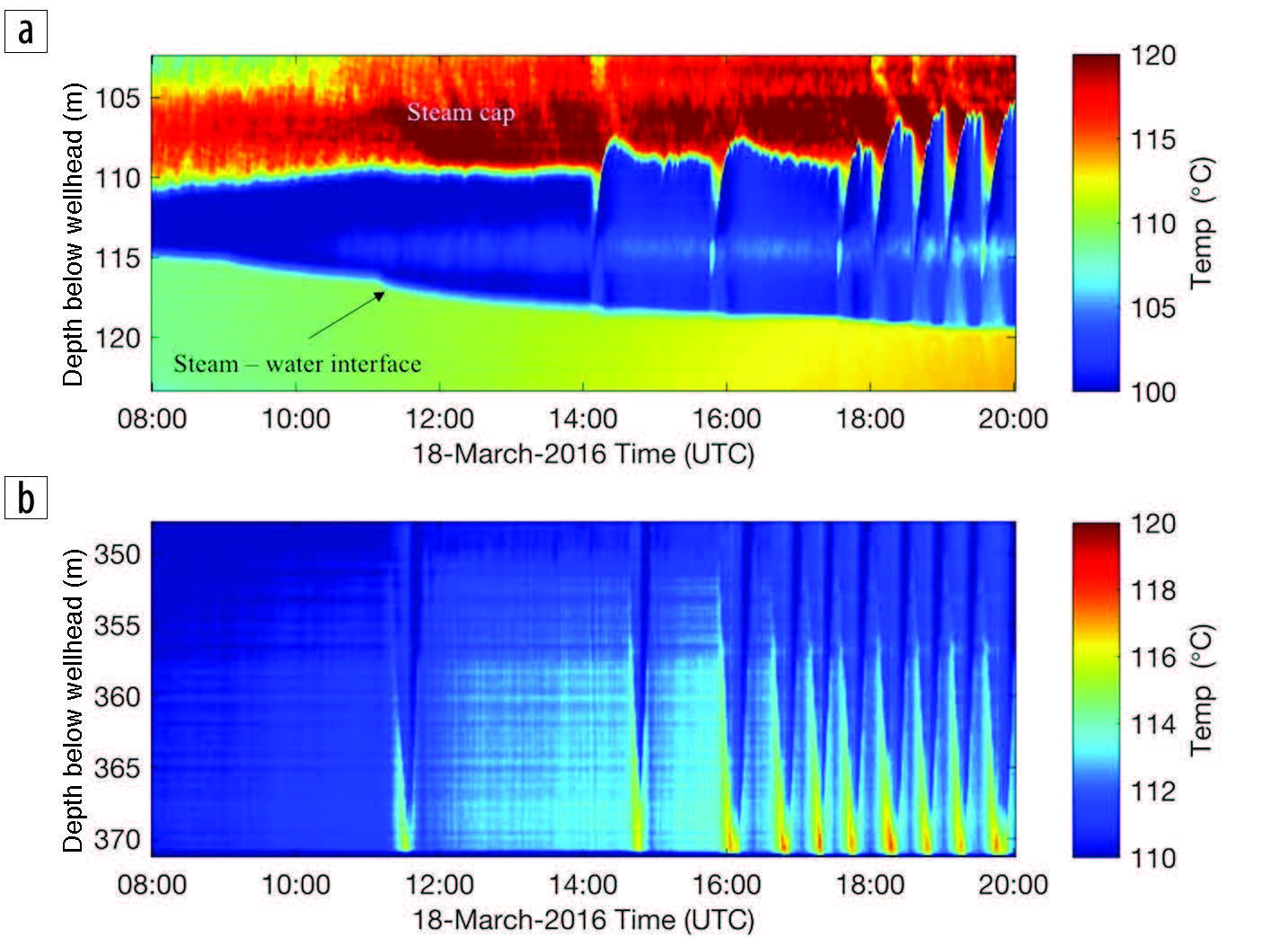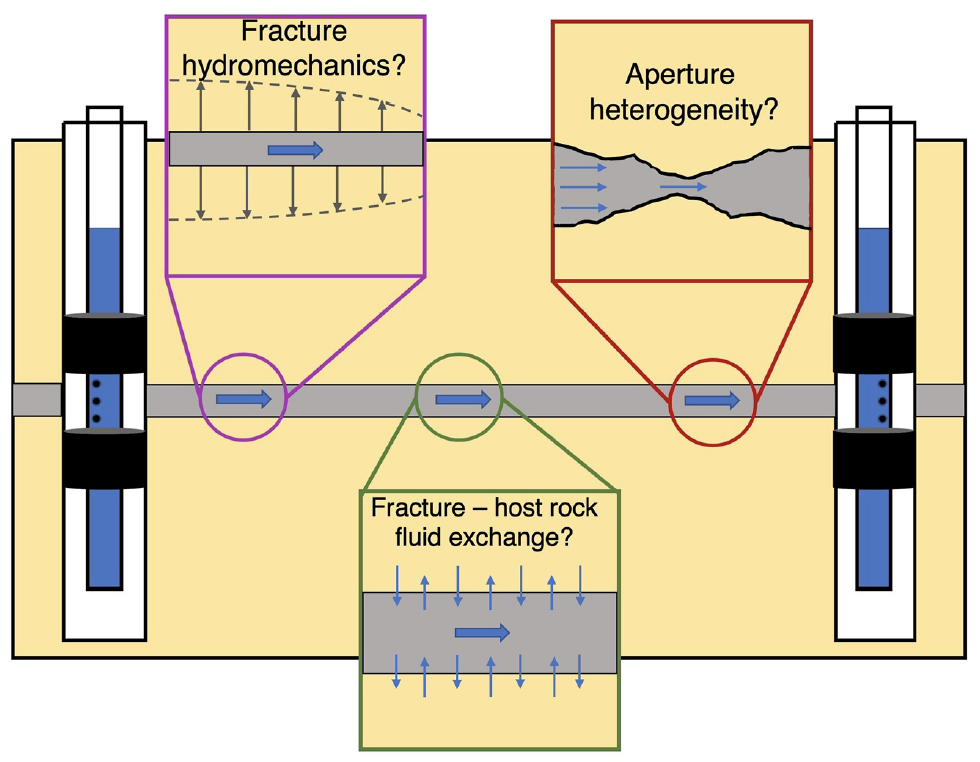Research
 I'm a broadly trained physical hydrogeologist that specializes in the integration of hydrologic field measurements with hydrologic modeling across mulitple scales. My research explores how the spatial distribution and variability of aquifer flow and transport properties impacts subsurface fluid flows, storage, and transport across a broad range of geologic settings. For more details, see my CV, Google Scholar, or the project synopses below.
I'm a broadly trained physical hydrogeologist that specializes in the integration of hydrologic field measurements with hydrologic modeling across mulitple scales. My research explores how the spatial distribution and variability of aquifer flow and transport properties impacts subsurface fluid flows, storage, and transport across a broad range of geologic settings. For more details, see my CV, Google Scholar, or the project synopses below.
Past and Current Projects:
Fractured Sedimentary Bedrock Characterization
 Fractured sedimentary bedrock aquifers are important water supply resources and popular targets for wastewater injection. Fractures dominate flow and transport in these aquifers; therefore, characterizing fracture hydraulic properties is a priority. This work uses oscillatory flow testing to characterize a single fracture at a research site dedicated to fundamental research in fractured sedimentary rock, and shows an apparent period-dependence in the returned parameter estimates, indicating the presence of complex processes occurring within the fracture not captured by simple analytical models.
Fractured sedimentary bedrock aquifers are important water supply resources and popular targets for wastewater injection. Fractures dominate flow and transport in these aquifers; therefore, characterizing fracture hydraulic properties is a priority. This work uses oscillatory flow testing to characterize a single fracture at a research site dedicated to fundamental research in fractured sedimentary rock, and shows an apparent period-dependence in the returned parameter estimates, indicating the presence of complex processes occurring within the fracture not captured by simple analytical models.
Aquifer Characterization and Parameter Uncertainty
 Characterizing the multi-scale fluid flow and storage properties of groundwater aquifers and their associated uncertainties remains a fundamental challenge in hydrogeology. Oscillatory hydraulic testing is a novel hydraulic characterization technique that is capable of testing aquifers at multiple scales by alternating pumping and injection in a regular manner to create a periodic pressure signal. This work develops a numerical inversion strategy that estimates effective aquifer properties and their associated uncertainty for fully confined and leaky confined aquifers. The results of this analysis shows the tradeoff between testing time and parameter uncertainty and highlights that increased sampling frequency produces the largest reduction in parameter uncertainties.
Characterizing the multi-scale fluid flow and storage properties of groundwater aquifers and their associated uncertainties remains a fundamental challenge in hydrogeology. Oscillatory hydraulic testing is a novel hydraulic characterization technique that is capable of testing aquifers at multiple scales by alternating pumping and injection in a regular manner to create a periodic pressure signal. This work develops a numerical inversion strategy that estimates effective aquifer properties and their associated uncertainty for fully confined and leaky confined aquifers. The results of this analysis shows the tradeoff between testing time and parameter uncertainty and highlights that increased sampling frequency produces the largest reduction in parameter uncertainties.
Geothermal Energy Development
 The subsurface will play a critical role in the transition to a net-zero carbon economy, with geothermal energy representing one component of a diverse portfolio of alternative energy strategies. Distributed fiber optic sensing technology provides high-resolution spatial and temporal temperature data. These temperature data provide insights into hydraulic dynamics occurring within the instrumented borehole not easily seen with traditional borehole profiling techniques. Further, these data allow for high-resolution characterzation of reservoir thermal properties that are critical for predictive simulations of reservoir lifetime.
The subsurface will play a critical role in the transition to a net-zero carbon economy, with geothermal energy representing one component of a diverse portfolio of alternative energy strategies. Distributed fiber optic sensing technology provides high-resolution spatial and temporal temperature data. These temperature data provide insights into hydraulic dynamics occurring within the instrumented borehole not easily seen with traditional borehole profiling techniques. Further, these data allow for high-resolution characterzation of reservoir thermal properties that are critical for predictive simulations of reservoir lifetime.
 The continental U.S. is situated over an estimated 100 GW of geothermal; however, this energy supply is largely underutilized because of the high risk and capital costs associated with bringing a geothermal plant online. In this work I combined an analytical heat transfer model and an economic model to explore the factors that impact the lifetime performance of an idealized geothermal reservoir. This work showed that the surface area available for heat exchange (i.e., the number of hydraulically active fractures) exerts the largest control on reservoir lifetime profitability, highlighting the need to constrain dominant flow paths in geothermal settings.
The continental U.S. is situated over an estimated 100 GW of geothermal; however, this energy supply is largely underutilized because of the high risk and capital costs associated with bringing a geothermal plant online. In this work I combined an analytical heat transfer model and an economic model to explore the factors that impact the lifetime performance of an idealized geothermal reservoir. This work showed that the surface area available for heat exchange (i.e., the number of hydraulically active fractures) exerts the largest control on reservoir lifetime profitability, highlighting the need to constrain dominant flow paths in geothermal settings.
